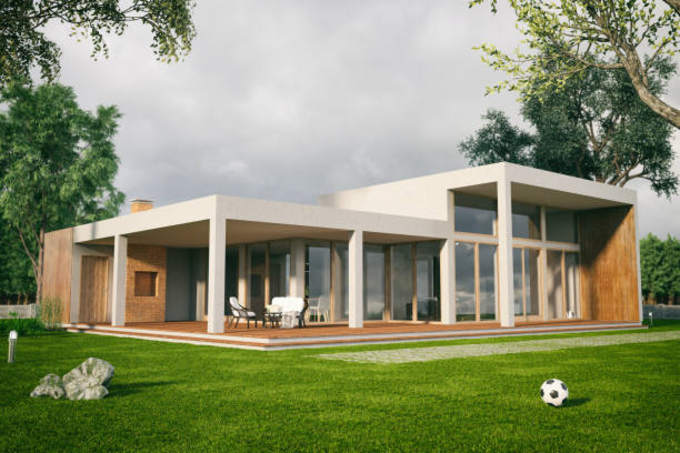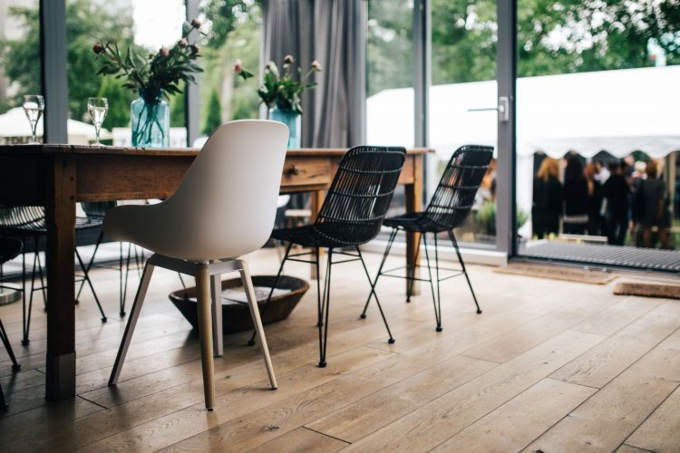
As our lifestyles change with the technological and social advances of the 21st century, it is important that our homes can keep up with our needs. We may not require or even have the drawing rooms that our 20th century ancestors so prized and thank goodness indoor plumbing is here to stay! However, we do need things that they would never have thought of.
Many people are now working from home. This is great for all kinds of reasons, from choosing the hours we work to suit our home life to being able to look after the kids without having to leave your job. The only downside is that many homes do not have the space or the right design to incorporate a workspace.
Another dramatic change is the way that we would all like a greater connection to the outdoor space we have. As our environmental concerns finally catch up to the disaster that is unfolding, many people are making more effort to grow their own veg and plant gardens that will attract wildlife.
Finally, technology is a clear indicator that times are changing – and changing rapidly. Even 10 years ago, the tech scene was quite dramatically different. The word “smart” is not just about getting good grades anymore – it is about getting your oven to switch on at the right time and temperature so your dinner is ready by the time you are home! In fact, most electricals from heating to music can now be controlled using Smart Speakers like Alexa or Google Home. Our lifestyles are already subtly changing with this technology.
So given the changes we are going through, what are the options for keeping up? Well, much of the technology available now is suitable for installation in a regular house, though you might need to upgrade your Wi-Fi capabilities to make the most of it. Nevertheless, what if your current home just doesn’t cut it anymore?
Self-building is a real challenge but more and more people are taking it on as a way to achieve everything they need within a budget. The average family home might be fine but for the same money, you can have something much more customized to your exact needs. Everything from the size of your rooms to the way you light them can be altered to your satisfaction on a self-build and you can have it all by hiring the right engineers, architect and builders.
Not sure where to start? Here are a few things to think about before you begin.

Identify Your Needs and Priorities
Before you do anything, you should set out your needs and priorities as a family. Try holding a family meeting including everyone who will live in the house with you. This can get a little complicated where you have some family members who only stay for part of the week, but take your time to listen to everyone.
The most basic requirements of any home are somewhere to sleep, eat and wash, safely and comfortably. In a studio apartment, this might mean one room with a bathroom attached but in a house, this could mean having multiple separate bedrooms, a kitchen and a bathroom. This is the standard.
However, what you require as a family could be more specific. If you are working at home, building your own house is the perfect way to create a workspace that you can use for business. This might mean creating a separate entrance so that your clients don’t need to see the natural chaos of toys your kids have created. You might also want to use an outbuilding for this purpose so that you have the sense of going to work every day.
Another priority might be increasing your connection to the outside world. Large glass doors and windows are a great way to do this but using the same flooring inside and out onto a verandah can create the illusion of space. Many homes built by developers do not make the most of natural light solutions but by building your own, you can add things like roof lights and double height spaces.
Technology is another area you might like to prioritize. Home voice assistants are ideal for easy living but you can also make the most other technologies to ensure that your home is as green, secure and connected as possible. For example, there is no point in heating your home while everyone is out but it is nice to arrive to a comfortable temperature so using an app-controlled heating system could be a good idea.
Building a smart home can take a lot of patience but when everything from counting eggs from the supermarket to improving your home security can be done using the latest integrated gadgets; you won’t look back once it’s done.
With all this in mind, you should have a good idea of the number of bedrooms you will need, the number of bathrooms you want (including any ensuites) and how you want to arrange your living space. Having a large open plan room that covers kitchen, dining and living is increasingly common but this isn’t necessarily for everyone. Additional rooms you might want to include are a playroom, an office, a dining room, a cinema room and a separate sitting room.
Plan Your Budget (and Have a Contingency!)
Once you know what you need, you can start to plan your budget. Budgeting is the most difficult part of any build because you need to be certain that you have enough money to finish the build to your specifications without going too much over.
You will need to know how you will get hold of the money for your self-build as well as how much you can afford to pay back each month. A self-build loan or construction loan is usually a good way to plan your funding. However, you can also use your savings to bring down the cost of any loan. It might be tempting, but putting any expenses onto a credit card is very risky and could end up costing you a lot more than you anticipate.
Even though you might have a good idea of what you want, your budget may mean that you need to rethink a few areas of your design to bring the cost down. In most cases, this means either reducing the size of the overall project or rethinking the more luxurious aspects of it. Most people find this part of the process quite difficult and finding a balance between affordability and being able to live your dream is a fine line. You should always ask a professional to help value your project and your architect should have a few tricks up their sleeve for reducing costs too.
Fixtures and fittings should always be considered at this point because it might be that swapping a bespoke kitchen for a budget kitchen will save enough for you to have the big windows you want. Furniture should also be regarded as a part of the cost and choosing cheaper furniture that you can easily replace in a few years’ time will help bring down the overall expenditure.
A contingency fund is also a vital part of building. This fund should be at least 10% of your building cost and will cover any unforeseen circumstances. Usually, the contingency fund is used getting out the ground where the groundwork have been more difficult than imagined or for dealing with delays for certain materials. The most important rule is that you don’t spend any of this money unless you absolutely have to!
Find a Decent Plot of Land
The right plot is really important and the less you have to spend on the land, the more you have to build with. Look for a plot that is within a good distance of local schools (if you have or plan to have kids), local amenities and anything else you require.
Finding a plot is a very personal thing but you should try to find a fairly level piece of land that is easy to build on. Inner city plots are more difficult to find but you might be able to tear down an existing building to create a space for your new home. This is a slightly more expensive way of doing things but could be worth the additional money when you consider the quality of life it will bring.
Planning permission may also vary with different plots. In the countryside, you may be a little more flexible but in the city, you will need to be careful about overlooking other people and blocking their light. This may limit the design you come up with but again, an architect should have a few tricks to design a house that satisfies all conditions.
This may be the very start of your journey but it is clear that by designing and building your own home, you can achieve far more than buying from a developer. More and more people are now choosing this route and now is your chance to put your own mark on the landscape.